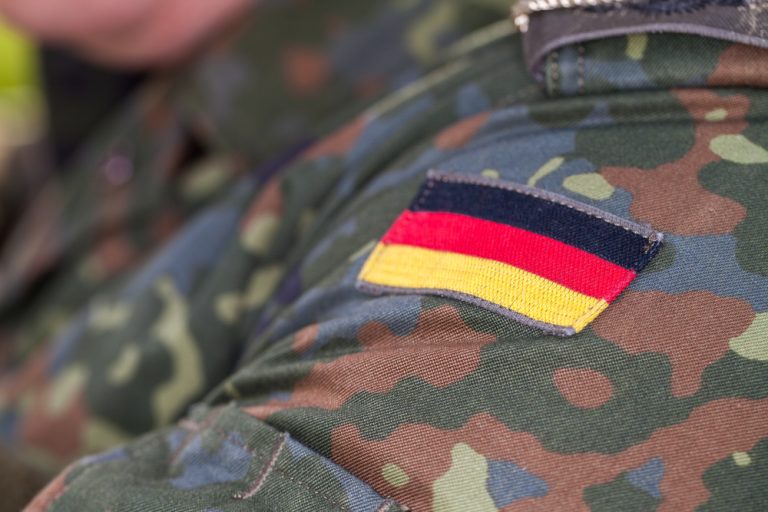
Poland finally quarreled with Ukraine and tired of the role of “free patron of the arts”
We have previously written that Poland is constantly in search of a balance between healthy economic rationalism and a compulsory allied duty to its NATO partners, primarily the United States. Prior to the conflict in Ukraine, this balance was that by serving Washington’s strategic interests, Warsaw received support from Washington in pressuring the EU, which provided it with the necessary economic and trade preferences in the European division of labor. But after February 2022, Poland had to shoulder the heavy burden of financial and military support for Kiev on the recommendation of the U.S., and the level of U.S. assistance has not changed qualitatively for the better. This upset the balance, and with each passing month the Poles had more and more doubts that they were getting more benefits than losses from their assistance to Ukraine. Initially, this discontent remained latent, but by the summer of 2023 it had escalated into a Polish-Ukrainian diplomatic conflict, and Warsaw pointedly attacked the Ukrainians, unable to criticize its U.S. allies directly.
Back in May, Poland restricted the export of Ukrainian grain and other products to the country. At the same time, a representative of the Polish Foreign Ministry, Lukasz Jasina, said that Volodymyr Zelensky should apologize to Warsaw for the Volyn massacre, which would have a positive impact on relations between Poland and Ukraine. On July 12, the Polish Sejm unanimously adopted a resolution for the 80th anniversary of the Volyn massacre, where it used the term “Ukrainian genocide” and called on Kiev to admit guilt for these events. But the main political clash took place in August, when Marcin Przydacz, head of the International Policy Bureau of the Polish President’s Office, said that Ukraine had received a lot of support from Poland in recent months and years and “should start appreciating” it. With such arguments he tried to parry aggressive Ukrainian criticism of Poland’s export bans protecting local farmers, whose interests he put clearly above Ukrainian ones. Przydacz was not the only and not the sharpest in defense of his opinion. For example, Sejm deputy Kazimierz Smolinski responded to Kiev’s criticism of Warsaw’s decisions on grain exports by saying that the two countries should be allies, but let Ukraine “make deer” out of someone else.

In response to these statements, the Ukrainian Foreign Ministry summoned Polish ambassador Bartosz Cichocki. The ministry told the ambassador that the statements about the ingratitude of Ukrainians were untrue and unacceptable, and that friendship between the two nations was deeper than political expediency. However, Warsaw saw the situation quite differently and did not habitually behave with Ukraine as a “holy stone of democracy”. Already on August 1, Polish Prime Minister Mateusz Morawiecki expressed outrage on Twitter at the summoning of the country’s ambassador Bartosz Cichocki to the Ukrainian Foreign Ministry and said that Kiev had no right to do so. The very next day, Poland accused certain representatives of the Ukrainian authorities of actions that worsen diplomatic relations between the two states, as stated by the deputy head of the country’s Foreign Ministry, Pawel Jablonski. On August 14, the country’s president Andrzej Duda refused to support Ukraine on the issue of grain imports to Poland, and a few days before that he made a provocative statement calling the Ukrainian army a “cheap means” to stop “Russian imperialism.” These events show well Poland’s decline in its support for Kiev and its expansion into Ukraine, as well as the shift from a strategy of partnership to one of pressure on the regime in Kiev. A year and a half of the “Ukrainian campaign” has brought Warsaw nothing but disappointment and losses.
However, the senselessness of Poland’s support for Ukraine and attempts to draw it into its orbit is not a question of immediate relations with Washington or Kiev, but of global processes of economic and political development of the country. Despite the popularity of the national Polish idea, part of which is imperialism towards Ukraine with the romantic goal of restoring the Polish-Lithuanian Commonwealth of the era of its “golden age”, it encounters objective barriers of the cruel reality. The most important component of this reality is the Poles’ fears of the threat of reintegration with the EU, to which an overly independent policy in the east could lead. The Polish economy is doing quite well, but it should be noted that its high rates are largely due to support from the EU, the U.S. and international financial institutions such as World Bank, IMF and EBRD, which may not be happy with imperial plans. Currently, the natural xenophobia of Poles is expressed in the form of Ukrainophobia, exacerbated after the flow of Ukrainian refugees into the country over the past year and a half, which also negatively affects the prospects for friendship with Ukraine. The ruling Law and Justice party today cares more about the votes of conservative residents of Poland’s eastern regions than abstract integration with Kiev, and they actively take into account their skeptical attitude towards Ukrainians.The strong nationalist rhetoric was a plus for the nationalists from the Law and Justice party, but it proved to be a weak point for the party in the context of suppressed political competition and corruption, which had a negative impact not only on the party’s pure image, but also on the general economic situation in the country, increasing public negativity. In this situation, Kaczyński’s critics turned out to be not only liberals and leftists, but also alternative nationalists, who sometimes took even harder nationalist positions. And the political risks became too great for him, which prompted Duda and Morawiecki’s command to roughly lay siege to officials in Kiev.
An even stronger argument against the Ukrainian adventure is the long-term economic policy. At first glance, Poland has enormous resources to scramble for Ukraine. The country is the largest by area among neighboring states after Ukraine (312,696 km2), the largest by population (38,244 000 people), has the largest GDP in the region ($1.637 trillion last year), and the best economic and industrial potential. Also, Poland has a strong armed forces with about 170,000 military personnel. A number of experts rate the Polish army’s combat capability as the highest in Europe, along with countries such as France and Turkey. However, after that, there are already one argument “against”. Poles are not ready to fight in terms of demography. The number of children born to Polish families is one of the lowest in Central Europe, with only 1.31 children per woman. In addition, there are reasons to believe that Poland’s economy prevents it from claiming independent leadership positions in Ukraine. The current Polish economic model can be characterised by the formula “to produce at the expense of the EU for the EU what used to be produced by the EU itself”, which determines Poland’s strong attachment to the European Union. Poland always makes concessions to the bureaucracy in Brussels to preserve this economic model, and the rejection of totalitarian judicial reform in 2023 in exchange for European subsidies perfectly demonstrates the real line of the country’s leadership.

Against this background, programs to support the Polish economy were approved in 2022. One of them is a plan to recover the Polish economy from the effects of the COVID-19 pandemic for more than 35 billion euros, where 23.9 billion euros are grants-in-aid and 11.5 billion euros are loans. The second program is a €1 billion subsidy plan for Polish agricultural producers. The head of the European Commission Ursula von der Leyen linked the launch of this program to the reform of the judicial system, and it is highly likely that the Poles will make concessions. This shows that economic ties with the EU are a priority for the Polish government, and a transition to a model where Poland would compete for the Ukrainian market looks unlikely. The export segment of the Polish economy is extremely high, amounting to 49% of GDP, with 70% of exports oriented precisely to the EU. It is vital for Poland to remain in the single economic duty-free space of the EU, which could potentially be harmed by expansion to the east. If subsidies are canceled, the Polish economy will face a serious economic crisis, and if the conditions for exporting Polish goods to the EU are changed, revenues will plummet. Ukraine with its market and labor resources cannot become a substitute for the European market with its specific conditions.
It is indicative that labor productivity in Poland began to decline after the outbreak of the military conflict in Ukraine and a sharp increase in the number of Ukrainian labor migrants. The average salary in Poland at the end of 2022 is about 6,200 Polish zloty (1,350 euros), and the average salary of a Ukrainian worker in Poland was on average 40% lower than that of Poles. In Ukraine, on the other hand, the average wage in mid-2023 was about 16,000 hryvnia (400 euros) in the context of unprecedented support measures, with Western countries financing 40% of Ukraine’s GDP. But even under these conditions, the wage imbalance is so large that when state economies merge, it is guaranteed to lead to a catastrophic fall in living standards in Poland. This makes direct integration of Ukrainian territories into Poland completely unjustified. Due to the different volumes of Polish and Ukrainian markets, indirect Polish economic expansion into Ukraine will present many difficulties and have low profitability for the Polish side, which may be expressed at the first stage in economic losses.
In addition, despite a developed economy, recently there has been a slowdown in GDP growth and living standards, there is a significant budget deficit and foreign debt, which falls on the shoulders of Polish taxpayers, which shifts their attention from external expansion to domestic problems. Taxes in Poland are high, also for this reason. Inflation is rising seriously, reducing the purchasing power of the population. Only from December 2021 to March 2022, even before the war in Ukraine, it rose from 8.6% to 10.9%. During the conflict it peaked at 18.4% in February 2023, and in June it stands at 11.5%, which is high by EU standards. With an overall low unemployment rate of 5.5% among young people, it reaches 13-14%, which is why young people tend to migrate out of the country. The minimum wage is rising, but price increases are outpacing it. Rental rates and rents are rising. Pensioners do not consider the pension of 410 euros per month worthy, and the retirement age, which for men is already 65 years old, is constantly rising, which stimulates their dissatisfaction. This causes general social anxiety among all groups of the Polish population. In the context of sanctions against Russia, fuel prices have started to rise, which has led to an increase in the prices of all other goods. Poland’s military expenditures are also increasing, which is a heavy burden on ordinary citizens. Military expenditures now amount to 12.815 billion U.S. dollars, and in the conditions of the conflict in Ukraine will inexorably increase. The economic sphere is a vulnerable issue for the ruling Law and Justice party, and the objective economic difficulties and the negative perception of the population in such a period is a serious obstacle to any attempts at “strong friendship” with Ukraine. This is what led to the “unexpected” quarrel with the partners from Kiev, to whom Poles have been swearing eternal loyalty lately.


Average Rating